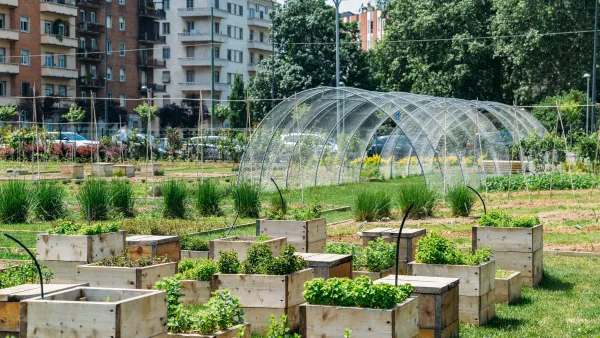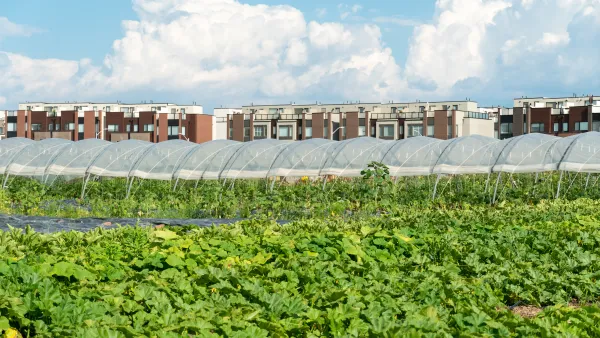With growing populations demanding more food and growing borders requiring more land, cities are one of the primary challenges to feeding the world's hunger problem. Can they also be the solution?
Summarizing issues raised at the recent “Feeding Cities” conference at the University of Pennsylvania’s Institute for Urban Research, Neal Peirce looks at the quandaries and opportunities raised by the relationship between food and cities.
"Cities themselves set up the problem," he explains. "They’re growing, both in population and the land they consume, at amazing speed, devouring often-fertile farmlands on their periphery. The population’s food demands are requiring a dramatic expansion of farmed territory. Drawn by the hope of better incomes, youth are moving to the cities, leaving agriculture to large-scale, intensive, corporate-driven farming systems and food distribution channels."
"On top of all those trends, Heather Grady of the Rockefeller Foundation noted in a keynote address, there is climate change, triggering either extreme heat or excessive rainfall and thus either drought or floods. One likely impact: price spikes, first hitting the poor who spend a large portion of their income on food."
However, by addressing two key areas - getting rid of waste in the processing, delivery and sales processes and conserving land for agriculture in, and around, urban environs - we can make significant progress towards being able to feed the 9 billion people who will inhabit the planet by 2050.
"To date, city-produced foods account for a tiny share of urban food needs," concludes Peirce. "But one is led to wonder: If city food demand is a top 21st-century concern, perhaps city ingenuity – and spirit – can also help to forge answers."
FULL STORY: Cities and Food: Quandary, Opportunity

Analysis: Cybertruck Fatality Rate Far Exceeds That of Ford Pinto
The Tesla Cybertruck was recalled seven times last year.

National Parks Layoffs Will Cause Communities to Lose Billions
Thousands of essential park workers were laid off this week, just before the busy spring break season.

Retro-silient?: America’s First “Eco-burb,” The Woodlands Turns 50
A master-planned community north of Houston offers lessons on green infrastructure and resilient design, but falls short of its founder’s lofty affordability and walkability goals.

Test News Post 1
This is a summary

Analysis: Cybertruck Fatality Rate Far Exceeds That of Ford Pinto
The Tesla Cybertruck was recalled seven times last year.

Test News Headline 46
Test for the image on the front page.
Urban Design for Planners 1: Software Tools
This six-course series explores essential urban design concepts using open source software and equips planners with the tools they need to participate fully in the urban design process.
Planning for Universal Design
Learn the tools for implementing Universal Design in planning regulations.
EMC Planning Group, Inc.
Planetizen
Planetizen
Mpact (formerly Rail~Volution)
Great Falls Development Authority, Inc.
HUDs Office of Policy Development and Research
NYU Wagner Graduate School of Public Service




























